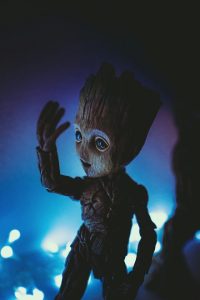In the vast realm of sci-fi, the perennial struggle between nostalgia and innovation unfurls. As an enthusiast and seasoned journalist, I embark on an exploration of 20 top-tier titles, deciphering the delicate interplay between venerating classics and pioneering uncharted territories.
Classics Revisited
Blade Runner

Blade Runner, a cyberpunk magnum opus, indelibly etches its influence across generations with its dystopian vision. An intriguing tidbit: the film’s opening scene was initially intended for Stanley Kubrick’s The Shining. Ridley Scott’s clash with the studio over Harrison Ford’s narration birthed two distinct versions, each contributing to the film’s enigmatic legacy.
The Fifth Element
Luc Besson’s vibrant anomaly, The Fifth Element, continues to captivate with its kaleidoscopic narrative. Did you know that each tentacle of the Diva during the opera scene had its puppeteer? Gary Oldman’s character, Zorg, even had a custom-designed firearm, underscoring the film’s commitment to visual ingenuity.
Futuristic Marvels
Ex Machina
Ex Machina plunges into the nuanced realm of artificial intelligence and ethics, showcasing Alicia Vikander’s meticulous dedication. An unexpected gem: the unscripted dance scene between Oscar Isaac and Sonoya Mizuno, adding an extra layer to the film’s narrative fabric.
District 9
Neill Blomkamp’s District 9, stemming from a scrapped Halo movie project, delves into the complexities of extraterrestrial relations. A quirky fact: the alien language in the film was crafted through an unconventional method—rubbing a pumpkin.
Space Opera Wonders
Guardians of the Galaxy

Marvel’s Guardians of the Galaxy seamlessly intertwines humor and heart, with Chris Pratt’s improvised dance-off scene and Vin Diesel’s recording of over 1,000 variations of “I am Groot” infusing cosmic fun into the narrative.
The Expanse
Navigating political intrigue and space exploration, The Expanse elevates authenticity by employing a real-life zero-gravity consultant. The homage to classic sci-fi literature through episode titles adds a layer of richness to the series.
Cutting-Edge Innovations
Arrival
Arrival challenges perceptions of time and language, featuring a meticulously designed alien language and Amy Adams’ commitment to linguistic authenticity. The film stands as a testament to pushing the boundaries of conventional storytelling.
Altered Carbon
Altered Carbon, with its generous budget for stunning visuals, ventures into the exploration of consciousness transfer. Joel Kinnaman’s intensive physical training adds a layer of authenticity to the narrative, immersing viewers in a visually striking future.
A Glimpse into Tomorrow
Moon
The hidden gem Moon navigates the psychological toll of lunar isolation with a modest budget and Sam Rockwell’s emotionally charged performance. The film stands as a testament to the power of storytelling, transcending budgetary constraints.
Dark
Dark, intertwining time travel and intricate family dynamics, requires actors to maintain detailed character notebooks. The series, initially pitched as a fusion of Twin Peaks and Stranger Things, delves into the complexities of human relationships within a time-bending narrative.
Innovations
I, Robot
The exploration of the relationship between humans and robots in I, Robot unfolds with interesting nuances. Will Smith’s commitment shines through, as he performed many of his own stunts. The film’s visual effects team went the extra mile, creating intricate facial movements for the robots to enhance their expressiveness.
Humans
The series Humans delves into a world where AI-powered humanoid robots serve humanity, raising profound ethical questions. Gemma Chan, who plays the lead synth, spent extensive time with a movement coach to perfect the robotic mannerisms, adding a layer of authenticity to the portrayal of artificial intelligence.
Mind-Bending Realities
The Matrix
Enter the mind-bending world of The Matrix, where reality is not what it seems. Keanu Reeves’ dedication is evident as he underwent months of martial arts training for his role as Neo. The iconic bullet-dodging scene was a seamless blend of practical and visual effects, contributing to the film’s iconic status.
Black Mirror
The anthology series Black Mirror holds a mirror to the dark side of modern society and technology. Each standalone episode explores a unique narrative, allowing viewers to jump into the series at any point. The title itself refers to the reflective screens of our devices, symbolizing the dark reflections of society portrayed in the show.
Ender’s Game
Ender’s Game, adapted from Orson Scott Card’s novel, navigates the complexities of war and leadership. Did you know the film employed actual military veterans as extras to enhance the authenticity of the battle scenes?
Firefly
Joss Whedon’s space-western series, Firefly, captures the essence of camaraderie and adventure. Despite its short run, the show gained a cult following. Each character’s distinct personality adds depth to the narrative.
The Martian
Ridley Scott’s adaptation of Andy Weir’s novel, The Martian, showcases the resilience of an astronaut stranded on Mars. Matt Damon’s portrayal and the film’s scientific accuracy received widespread acclaim. NASA even endorsed the movie for its realistic depiction of space travel.
Orphan Black
Orphan Black, a sci-fi thriller series, explores cloning and identity. Tatiana Maslany’s remarkable performance, playing multiple clones, earned her critical acclaim. The series delves into the moral and ethical implications of human cloning.
Star Wars: The Mandalorian
The Mandalorian, part of the Star Wars universe, introduces a lone bounty hunter navigating the galaxy’s outskirts. The show’s groundbreaking use of LED screens for realistic backgrounds revolutionized filmmaking. Baby Yoda, a breakout star, captured the hearts of audiences worldwide.



